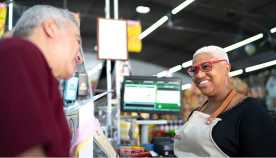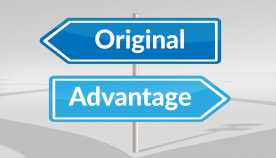AARP Eye Center
- right_container
- Health
- Money
- Work & Jobs
- Social Security
- Medicare
- Caregiving
- Games
- Travel
- More...
- Entertainment & Style
- Family & Relationships
- Personal Tech
- Home & Living
- Auto
- Staying Sharp
- Podcasts
- Videos
Morgan County Fair
History:
We discovered many things about the Morgan County Fairs of the past and although we cannot cover everything, we wanted to share some of the highlights that we learned.
In 1851, the Morgan County Agricultural Society was formed for the purpose of conducting an annual exposition. In this first year a stock fair was held at the Poor House grounds in the eastern part of Jacksonville. A few days later a "textile fabrics" and home manufacture's exhibit was held on the public square.
In 1852 or 1853 a charter was issued to the Morgan County Agricultural Association. The group purchased grounds southeast part of Jacksonville and conducted annual exhibitions until 1858. At that time a tract of 30 acres located one and a half miles west of the public square was purchased. This is the same site on which we hold the fair today; however, fairs have not been held every year.
State fairs used to be held across the state, not just in Springfield. In 1860, the State Fair was held in Morgan County.
Fairs in the late 1800's were quite a bit different than fairs today. The 1872 fair were obviously trying to capture exhibitors by not charging entry fees. The competition in all classes stated they were "open to the world." The catalog noted the population of Morgan County to be 30,000 with an assessed valuation of 40 million dollars. Land was worth $50-$150 an acre.
The premiums offered for the 1872 fair totaled more than $10,000. One of the biggest attractions was horse racing with purses ranging up to $200. Cash prizes were given for all sorts of farm implements including: Grinding mills, washing machines, churns, and even brooms.
There were premiums for harness and water raising devices.
A surprising exhibit was a class for the best champagne: cherry; current; grape; rhubarb; raspberry; and gooseberry wines and cordials.
Other articles told us that in the late 1800's farm families came to the fair in spring wagons. At this time there was also a streetcar that traveled directly to the fairgrounds from the public square. In those days, each farmer bought a season ticket that admitted the whole family. They packed their lunches in feed baskets and at fried chicken, sandwiches, and pies under the huge elm trees that used to generously populate the fairgrounds.
One feature of an 1880 fair was a man and woman riding high-wheeled bicycles. There were also horse pulls and mule races. It was written that only a single mule finished one nine-mule race. Of course, horse racing was a big attraction with lots of local participants.
Somewhere in the 1930's the fair became unprofitable and the state paid off the fairs accounts and took over the title to the land. For a few years the School for the Deaf used the grounds to raise dairy cattle.
In the 1940's a local group initiated interest in regaining access to the fairgrounds. In 1948, the new Morgan County Fair Association purchased the 42-acre fairgrounds from the State of Illinois for $12,000. They wanted to retain the grounds for the use of the people of Jacksonville.
In 1951, the Fair Association resumed the annual Morgan County Fair. The fair was established as a Junior Progress Show and 4-H fair for youth under 21 from Morgan County. The fair was and has continued to be a community project. Businesses, organizations and farm families have donated money and more importantly free labor to rebuild the current fairgrounds.
The fairgrounds have seen many changes since 1957. Surplus soil from the development of Westgate Avenue was used to fill in the swampland on the ground's west side. Buildings were added one at a time: 1st hog barn; west side horse barn; restrooms; 4-H building; merchants building; sheep barn; 2nd hog barn; 2 cattle barns; museum building; restaurant; poultry house; and recently another horse barn and cattle barn.
In the early 1970's the Fair Association established a museum on the grounds. And from this museum eventually came the Prairie Land Heritage Museum on Lincoln Avenue. The fairgrounds did not have the space needed to conduct threshing and other old time demonstrations. In 1990, C. B. Lewis deeded the Lewis Elevator to the Fair Association; shortly thereafter, the Fair Museum's machinery, equipment, and artifacts were moved to the C. B. Lewis Museum at 325 West Lafayette. The consolidated museum is truly a historical site for Morgan County's agricultural and commerce history and quite an attraction for any fair enthusiast or history buff.
Before we close we want to touch on the fair's attractions and entertainment. In the 1950's and 1960's light horse shows, harness racing, and Western horse shows were a main attraction. At one time over 300 horses were housed on the grounds during the fairs. Only horse racing continues to be a current fair attraction.
Some may remember the pony races held from 1951 to 1955. Local owners brought ponies to the fair and let children race them. After an injury, these races were discontinued because of the potential liability. But, many still remember the fun that they had participating in these races.
Stock car racing began in 1951 and were held regularly until 1957. These races initially generated income for the Fair Association. They were restarted in the late 1960's and held off and on. Stock cars continue to be a popular fair attraction, as well as a regular weekly summer event at the fairgrounds the last 2 or 3 years.
Tractor pulls started in the 1960's with local farmers pulling their tractors. The 1970's saw the rise of professional tractor pulls and truck pulls, which continue today.
Fairs have changed but they continue to be a community event. A place to go to have fun, meet people, rekindles memories and also makes new ones.
Fairs are truly for all ages, especially the Morgan County Fair. We salute all the people who have worked so hard in making the Morgan County Fair what it is today: A place to create history and a place to discover history.
AARP Events for Lilesville
-
Featured Event
Try Zumba Gold for Fitness and Brain Health
Wednesday, Mar 5, 2025 at 11:00 a.m. ET
Online Event
-
Featured Event
Prepare to Care
Wednesday, Mar 5, 2025 at 6:00 p.m. ET
Charlotte Mecklenburg Library- Pineville
Pineville, NC
-
Featured Event
WWAD Winston
Saturday, Mar 8, 2025 at 10:00 a.m. ET
Newell-Massey Greenway
Winston-Salem, NC

New Pricing Coming in 2025.
This is AARP's first rate increase in 15 years.
Don't miss out, join today and save!
























































